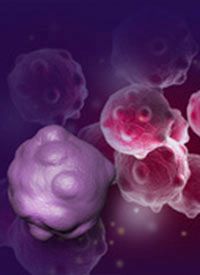Article
NCCN Recommends Sodium Thiosulfate to Reduce the Risk for Cisplatin-Induced Hearing Loss in Pediatric Patients
Author(s):
Fennec Pharmaceuticals announced an update to the National Comprehensive Cancer Network’s practice guidelines for Adolescent and Young Adult Oncology, calling for the use of sodium thiosulfate injection to reduce the risk for ototoxicity in pediatric patients receiving cisplatin.

Fennec Pharmaceuticals announced an update to the National Comprehensive Cancer Network’s (NCCN) practice guidelines for Adolescent and Young Adult (AYA) Oncology, calling for the use of sodium thiosulfate injection (Pedmark) to reduce the risk for ototoxicity in pediatric patients receiving cisplatin.1
Cisplatin and other platinum compounds are commonly used to treat many pediatric malignancies. However, these therapies can cause permanent hearing loss in survivors of pediatric cancer. The incidence of ototoxicity depends upon the dose and duration of chemotherapy, and many of these children require lifelong hearing aids or cochlear implants.
“The use of cisplatin chemotherapy, an indispensable treatment of choice in many pediatric cancer cases, can be toxic to the ears and frequently causes permanent and irreversible bilateral hearing loss,” Fennec CEO Rosty Raykov, said in a news release. “In fact, permanent hearing loss occurs in approximately 60% of children treated with cisplatin and can be as high as 90%.”
The FDA approved sodium thiosulfate in September 2022 to reduce risk for ototoxicity associated with cisplatin in pediatric patients 1 month and older with localized, non-metastatic solid tumors.2 The decision was based on findings from the SIOPEL 6 (NCT00652132) and COG ACCL0431 (NCT00716976) trials.
In SIOPEL 6, 109 patients with standard risk hepatoblastoma were randomly assigned to 6 cycles of perioperative cisplatin-based chemotherapy with (n = 57) or without (n = 52) sodium thiosulfate. The primary outcome was the percentage of patients with Brock Grade ≥1 hearing loss, assessed using pure tone audiometry after treatment or at an age of at least 3.5 years, whichever was later.
Incidence of hearing loss was lower in the sodium thiosulfate and cisplatin arm compared with the cisplatin alone arm (33% vs 63%; unadjusted relative risk, 0.52; 95% CI, 0.33-0.81; P = .002).
Investigators in COG ACCL0431 enrolled 125 pediatric patients with solid tumors at 38 sites in the United States. Patients were randomly assigned 200 mg/m2 or higher cisplatin-based chemotherapy with (n = 49) or without (n = 55) sodium thiosulfate. The primary outcome was hearing loss according to American Speech-Language-Hearing Association criteria, assessed at baseline and 4 weeks after the final dose of cisplatin.4
Fourteen (28.6%) patients in the experimental group experienced hearing loss compared with 31 (56.4%) in the control group (P =.00022). Adjusted for stratification variables, the likelihood of hearing loss was significantly lower in the experimental group compared with the control group (odds ratio, 0.31; 95% CI, 0.13-0.73; P = .0036).
References
- Fennec Pharmaceuticals announces updated NCCN Clinical Practice Guidelines recommend PEDMARK® (sodium thiosulfate injection) to reduce the risk of cisplatin-induced hearing loss in pediatric patients. News release. January 25, 2023. Accessed January 25, 2023. https://bit.ly/3Df2cgK
- FDA approves sodium thiosulfate to reduce the risk of ototoxicity associated with cisplatin in pediatric patients with localized, non-metastatic solid tumors. News release. FDA. September 20, 2022. Accessed January 25, 2023. https://bit.ly/3R8Pfup
- Brock PR, Maibach R, Childs M, et al. Sodium thiosulfate for protection from cisplatin-induced hearing loss. N Engl J Med. 2018;378(25):2376-2385. doi:10.1056/NEJMoa1801109
- Freyer DR, Chen L, Krailo MD, et al. Effects of sodium thiosulfate versus observation on development of cisplatin-induced hearing loss in children with cancer (ACCL0431): a multicentre, randomised, controlled, open-label, phase 3 trial. Lancet Oncol. 2017;18(1):63-74. doi:10.1016/S1470-2045(16)30625-8








